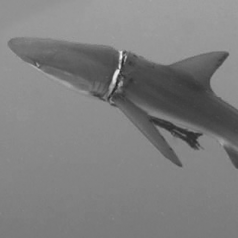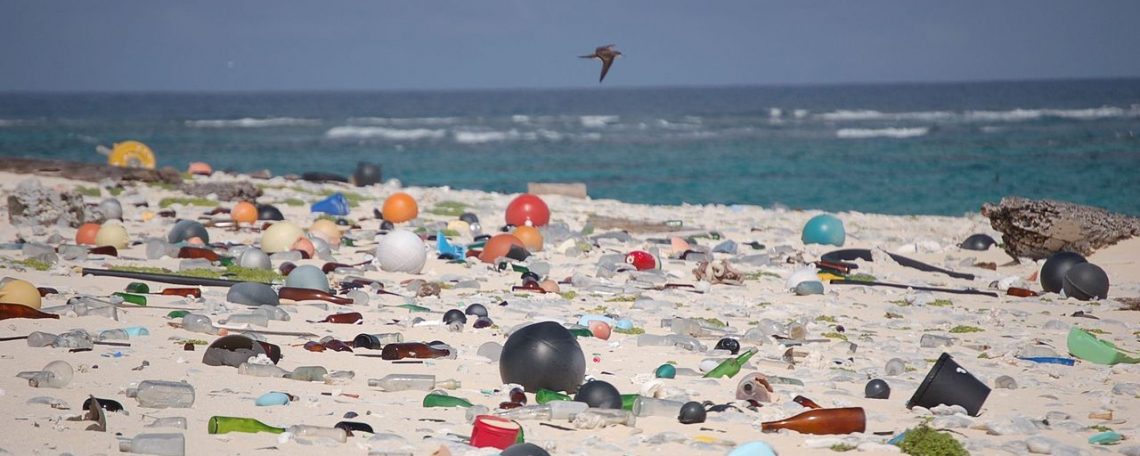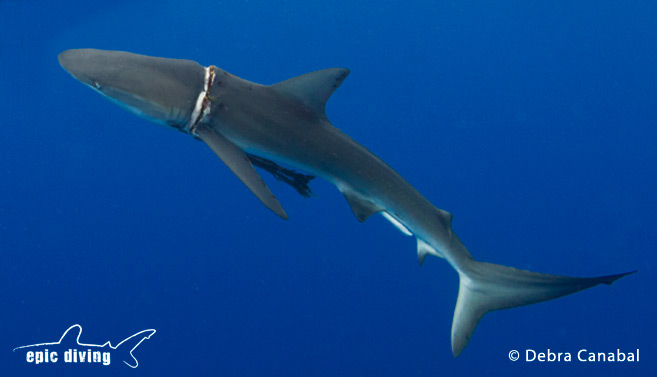
More than 5 trillion (that is 5.000.000.000.000) pieces of plastic are estimated to be floating around in the world’s oceans, weighing over 250.000 tonnes. This amount of plastic might be difficult to imagine, but everything from daily household products to military equipment and now also fish, contains plastic. Yes, you read that right, fish contain plastic now too.
Let’s be honest: for mankind, the invention of plastics was a true revolution. Plastic toys from China, plastic soda bottles, plastic bags, pieces of your TV and chances are that even your daily skin scrub has plastic in it. Probably the majority of products that you buy and use on a normal day contain some sort of plastic. Even the bag you use to carry your stuff home is probably made out of… plastic. Ever since its invention in 1907, the production of modern synthetic plastics has experienced an exponential rise in production and exploded after WW II. After the war ended in 1945 the plastics industry was rapidly overproducing and had to look for new markets. Shortly after, the industry started to produce for the consumer market, with great success. Plastic was cheap to produce, very versatile and durable compared to all the other materials on the market at that time. In short, plastic was going to save the world.
Unfortunately, they also have a big disadvantage: plastics do not decompose in nature. Dumping it in landfills was, and still is, not going to solve the problem, and given most plastic products are only produced as disposable or short lifetime products, the garbage pile of plastic products quickly grew bigger and bigger.
So how bad is the problem? A recent report by the Ellen McArthur Foundation states that under the business-as-usual scenario the oceans will contain more plastics than fish by 2050 (weight-wise). Of course, this scenario is facilitated by overfishing, but the plastic consumption is also still on a steep increase. To put it into perspective, of all the plastics produced in the U.S. in 2008, only 6.5% was recycled. The rest of the plastics were discarded in landfills. However, on many islands and more remote coastal places in the world, no garbage collection services exist. This results in that more dumped waste is blown directly into the sea in these areas.
Different factors like floods, rain, and wind, but also littering near rivers or on the beach can cause so-called macroplastics (particles > 5 mm) to end up in the oceans. These large plastic pieces float and create large garbage patches where ocean currents meet. A lot of microplastic particles (< 5mm) also enter the ocean through sewage water coming from washing your clothes (small particles wash off your plastic clothes) or using a scrub or toothpaste with plastic beads (microbeads). Moreover, under the influence of UV-radiation by the sun and wave action, macro-plastic floating near the surface is degraded slowly into particles of microplastic.

As expected, pollution on this scale definitely has an impact on marine life. Turtles, whose diet consists largely out of jellyfish, often mistake plastic bags for prey. The same goes for birds, fish, seals, and cetaceans which all have been found dead with plastic as the most likely cause of death. But does plastic pollution also impact predators like sharks and other large pelagic fishes?
A 2015 study focusing on three marine predators (i.e. swordfish, bluefin tuna and albacore tuna) determined plastics were present in 18% of all the fishes. The study represents the first documentation of plastic traces in large pelagic fish from the Mediterranean. Results from other parts of the world show similar results. 45% of the opah (or moonfish) included in a 2013 study in the North Pacific had plastic in their stomach, so did 9% of the bigeye tuna and 30% of the lancetfish. Comparable studies on sharks lack behind, but a study conducted off the South African coast determined that over 7% of the studied tiger sharks had some sort of plastic in their stomach.

However, with many shark species being scavengers, them ingesting strange objects is nothing new, in fact, they have been doing so for a couple of hundred years. Historical records show sharks in the Mediterranean ingested body armor of a knight, number plates, boat screws and large parts of a plane. The fact that sharks have been doing this, means with more plastic in the ocean, the number of sharks with plastic in their stomach is likely to increase. It is probably not the direct ingestion of these macro-plastics which is a major threat to sharks, as sharks can invert their stomach to get rid of inedible objects, but ensnaring of these large fish by ‘ghost nets’ or plastic material can be a direct threat to these animals (like the dusky shark in the photo).
In a process known to scientists as biomagnification, toxins concentrate according to how high an animal is in the food chain. When taking this process into account, plastics can be a potentially bigger threat to sharks and other high trophic level fish (i.e. fish feeding at higher levels in the food chain). And humans.
The plastics might leak toxins themselves, which is a direct threat to marine life. But once macro-plastics are degraded into smaller micro-plastic particles, they also become an indirect threat. Other pollutants like PCBs and DDTs (a variety of man-made chemicals, largely produced during the last century) bind to plastics in seawater. Once plastics are degraded into micro-plastics, not only does the binding surface for these toxins increase, but the smaller particles are also more accessible for consumption by fish larvae and other zooplankton near the bottom of the marine food chain. Zooplankton is eaten by small fish and small fish are consumed by larger fish. The reason these fish grow bigger is that they eat more of the smaller, causing small plastic particles and toxins to concentrate in the large fish (biomagnification).
In addition to PCBs and DDTs, there is, however, one more contaminant that we need to consider: mercury. Mercury originating from industrial processes, mining, but also natural processes is released into the atmosphere. Eventually, this mercury comes down and enters inland streams or the oceans. Here specific bacteria transform the mercury to methylmercury, a neurotoxin. From here the mercury can take one of two routes to end up in small fish: (1) fish directly absorb the neurotoxin through their gills, or (2) the mercury binds to micro-plastic particles, just like PCBs and DDTs, and are then mistaken for food by small fish. Just like the other pollutants taken up by small fish, this results in increased mercury concentrations in larger predatory fish (biomagnification). In mammals (and thus also in humans) mercury affects fertility, developments of embryos and growth. In sharks, scientists found that sharks with high mercury concentrations in their body were smaller compared to conspecifics with lower concentrations of mercury.
So, while some shark populations around the world are recovering from overfishing, the potential long-term threats of these contaminants remain largely understudied. The fact that maternal offloading of these contaminants happens in viviparous (live-bearing) sharks is worrying, as this causes the offspring to have extremely high levels of contaminants originating from the mother. It could be hypothesized that these pollutants could have a long-term effect on the physiology of sharks, and indirectly have a negative effect on entire populations.
We know that these contaminants have an impact on human health. Up to 33% of the shark fins sampled in Chinese cities were classified as unsafe for human consumption based on the levels of methylmercury. Therefore, fish like swordfish, sharks, and tuna are now classified as unsafe to consume by pregnant women. And with humans at the end of the marine food chain, we should expect that continued pollution can seriously jeopardize our seafood consumption.
So, here are three things that you can do in your daily life to minimize your plastic footprint:
- Say no to disposables. Disposables are single-use products like plastic bags, plastic plates, cups, and bottles. Replacing them with reusable products not only saves you money in the long run but also limits your plastic consumption.
- Ban micro-plastics (or microbeads) from your life. They can be found in a lot of cosmetics like scrubs and toothpaste. Check the ingredients and make sure to buy eco-friendly alternatives like the ones with beads made out of coconut.
- Recycle! Sounds pretty obvious, but by making sure your used products are recycled you prevent these plastics to end up somewhere in nature!
To help even more: help by cleaning beaches! On August 13th Save Our Sharks is teaming up with the North Sea Foundation to help them during their annual beach cleanup here in the Netherlands. To join us here in the Netherlands, click here! To join a cleanup on one of the Dutch Caribbean islands, contact the local nature organization!
Text: Guido Leurs
Photography: Plastic Beach – Susan White/USFWS (WikiMedia); Dusky shark: Debra Canabal (Epic Diving)





